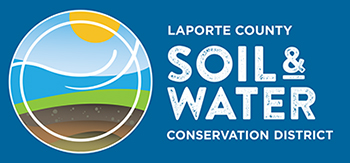Just because a BMP is installed, doesn’t mean that it is working properly. Each BMP has to be installed properly and regularly maintained to function as it is intended. Below, you will find a “bad” and “good” representation of common construction Best Management Practices. Please contact our office for questions or assistance with your BMP’s.
Vegetative Buffers
- Protect and install vegetative buffers along waterbodies to slow and filter stormwater runoff.
- Maintain buffers by mowing or replanting periodically to ensure their effectiveness.
 |
 |
| Bad |
Good |
Construction Entrances
- Remove mud and dirt from the tires of construction vehicles before they enter a paved roadway.
- Properly size entrance BMP’s for all anticipated vehicles.
- Make sure that the construction entrance does not become buried in soil.
 |
 |
| Bad |
Good |
Construction Phasing
- Sequence construction activities so that the soil is not exposed for long periods of time.
- Schedule or limit grading to small areas.
- Install key sediment control practices before site grading begins.
- Schedule site stabilization activities, such as landscaping, to be completed immediately after the land has been graded to its final contour.
 |
 |
| Bad |
Good |
Dirt Stockpiles
- Cover or seed all dirt stockpiles.
 |
 |
| Bad |
Good |
Protect Natural Features
- Minimize clearing.
- Minimize amount of exposed soil.
- Identify and protect areas where existing vegetation, such as trees will not be disturbed by construction activity.
- Protect streams, stream buffers, wild woodlands, wetlands, or other sensitive areas from any disturbance or construction activity by fencing or otherwise clearly marking these areas.
 |
 |
| Bad |
Good |
Silt Fencing
- Inspect and maintain silt fences after each rainstorm.
- Make sure the bottom of the silt fence is buried in the ground.
- Securely attach the material to the stakes.
- Don’t place silt fences in the middle of a waterway or use them as a check dam.
- Make sure storm water is not flowing around the silt fence.
 |
 |
| Bad |
Good |
Site Stabilization
- Vegetate, mulch, or otherwise stabilize all exposed areas as soon as land alterations have been completed.
 |
 |
| Bad |
Good |
Slopes
- Rough grade or terrace slopes.
- Break up long slopes with sediment barriers, or under drain, or divert stormwater away from slopes.
 |
 |
| Bad |
Good |
Storm Drain Inlet Protection
- Use rock or other appropriate materials to cover the storm drain inlet to filter out trash and debris.
- Make sure the rock size is appropriate (usually 1 to 2 inches in diameter).
- If you use inlet filters, maintain them regularly.
 |
 |
| Bad |
Good |


















